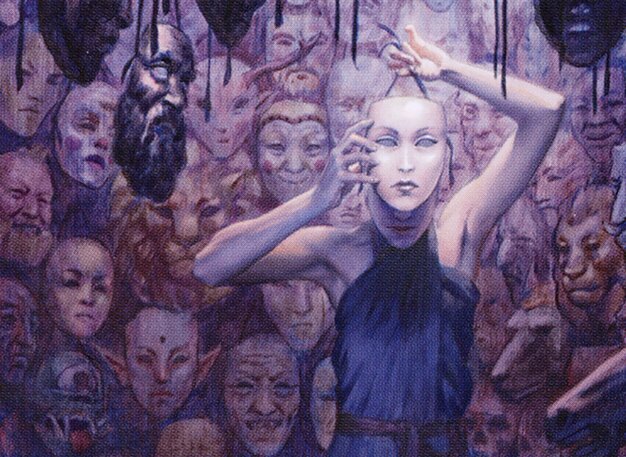A Changeling murdered a series of people to approach, kill, and replace the Count of Belthanis. From its underwater lair, an Aboleth psychically directs the Changeling and plots a return to its dominion over land-dwelling mortals. The Changeling takes time to commit each murder because they must first observe each target and learn to impersonate the target’s form, voice, and mannerisms. The players arrive as the Changeling prepares to murder the count. Can the party piece together the clues in time?
I love running a mystery for my group. When mystery clicks at the table, the players get to engage their problem-solving skills without the outcome feeling expected or inevitable. Well-run mysteries let the party approach a problem from any angle because the GM is prepared to go off script. I wrote Loose Changeling with this approach in mind. You can use every bit of detail I’ve included or just read the first couple pages to get the order of events for the party to investigate.
If you run Loose Changeling, or want to talk about running TTRPG mysteries in general, please contact me on Mastodon @[email protected]
Inspiration
I took inspiration for the mystery from a line in one of my favorite movies, Knives Out. In the lead up to the dramatic finale, Daniel Craig’s character uses a donut as a metaphor for a mystery within a mystery:
“I spoke in the car about the hole at the center of this donut. And what you and Harlan did that fateful night seems at first glance to fit that hole perfectly. A donut hole in a donut’s hole. But we must look a little closer. And when we do, we see the donut hole has a hole in its center. It is not a donut hole, but a smaller donut with its own hole and our donut is not whole at all!”
Benoit Blanc
In Loose Changeling, the party is presented with an explanation for a murder that at surface-level seems to make sense. However, even the lightest scrutiny reveals facts that contradict the cover story–the hole inside the donut hole, if you will.
Mystery as a Tool for Exploration
Mysteries are also great ways to explore an area! When else are characters going to try as hard to learn about their surroundings?
I wrote Loose Changeling to introduce my players to Belthanis, the largest city in my campaign’s starting area. I won’t bore you with my campaign setting, since no one really wants to hear about other people’s homebrew worlds, except to mention one thing that’s important for the adventure. Due to an unexplained occultation of Maglubiyet, Goblins recently began migrating from the wilds into cities to find work. Essentially, they have traded their precarious existence as low-level threats on the frontier for a precarious existence as marginalized urban laborers. The players investigate a murder which appears at first blush to be the work of a Goblin craftsman. The real killer relies on prejudice against Goblins to remain hidden.
Every Mystery Needs a Twist
Most real crimes are straightforward, and most real criminals are brutish in their thinking. But a good mystery story needs a twist. We crave twists in mysteries because they add thrills. This story has two.
The first twist overturns expectations. What begins as a simple fetch quest unfolds as a murder mystery when the person the party is supposed to meet has disappeared. Uh-oh! To keep the party on track, they can’t collect the item without literally stepping over the murder victim’s corpse.
The second twist adds a fantastic element. This is D&D after all! Once the party puts the timeline together, the order in which the murders occur seems impossible unless… the murderer can change shape.
The Problem of Clues
Hide the key to the mystery behind skill checks and we risk leaving our party lost because of a bad roll. Worse still, we might be tempted to let them fish for the result in which case what are we even doing? On the other hand, if we put all the clues out there, players don’t get to show off their characters.
I tried in this adventure to put my philosophy in practice. There are some clues that the party will come across that just scream “this doesn’t add up” but there are also some extra bits in each location that the characters can learn through skill checks or clever roleplay. I also included a “Loose Ends” section to help anyone who runs the adventure generate their own clues.
Credit Where Credit is Due
Loose Changeling is written by me, Alex Gray. It is unofficial fan content and is not endorsed or approved by Wizards of the Coast. I made the stat blocks in the adventure using guidance from Forge of Foes by Teos Abadía, Scott Fitzgerald Gray, and Michael E. Shea. Thank you for making such a great resource!
Thank you for reading! If you run Loose Changeling, please tell me about it on Mastodon: [email protected] If your players stumbled upon any plot holes that gave you trouble or got stuck, please let me know. I welcome your feedback and suggestions.
Feature Image “Body Double” by Winona Nelson, copyright 2014 Wizards of the Coast

